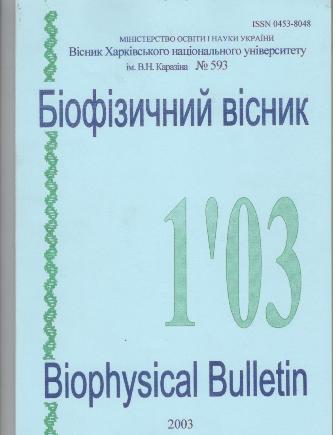Resonance energy transfer in membrane systems. III. Planar acceptor distribution in two monolayers
Abstract
The model of resonance energy transfer in membranes is extended to the case where the donors and acceptors are randomly distributed over three parallel planes (two acceptor ones and a donor one). The model allows for the orientational behavior of chromophores in the membrane and permits expressing the average orientation factor for a given donor-acceptor pair via steady-state and fundamental anisotropies of the chromophores in corresponding environment. Criteria for the optimal choice of donor-acceptor pairs providing maximum accuracy of estimation of the donor plane position in the membrane are given.
Downloads
References
Matko J, Edidin M. Meth. Enzymol. 1997;278:444-62.
Loura L, Fedorov A. Biochim. Biophys. Acta. 2000;1467:101-12.
Silvius J, Zuckermann M. Biochemistry. 1993;32:3153-61.
Wu P, Brand L. Anal. Biochem. 1994;218:1-13.
Domanov YeA, Gorbenko GP. Biophysical Bulletin. 2001;9(2):54-8.
Gorbenko GP, Domanov YeA. Biophysical Bulletin. 2002;10(1):50-3.
Wolber P, Hudson B. Biophys. J. 1979;28:197-210.
Davenport L. Meth. Enzymol. 1997;278:487-512.
Dale R, Eisinger J, Blumber W. Biophys. J. 1979;26:161-94.
Authors who publish with this journal agree to the following terms:
- Authors retain copyright and grant the journal right of first publication with the work simultaneously licensed under a Creative Commons Attribution License that allows others to share the work with an acknowledgement of the work's authorship and initial publication in this journal.
- Authors are able to enter into separate, additional contractual arrangements for the non-exclusive distribution of the journal's published version of the work (e.g., post it to an institutional repository or publish it in a book), with an acknowledgement of its initial publication in this journal.
- Authors are permitted and encouraged to post their work online (e.g., in institutional repositories or on their website) prior to and during the submission process, as it can lead to productive exchanges, as well as earlier and greater citation of published work (See The Effect of Open Access).





